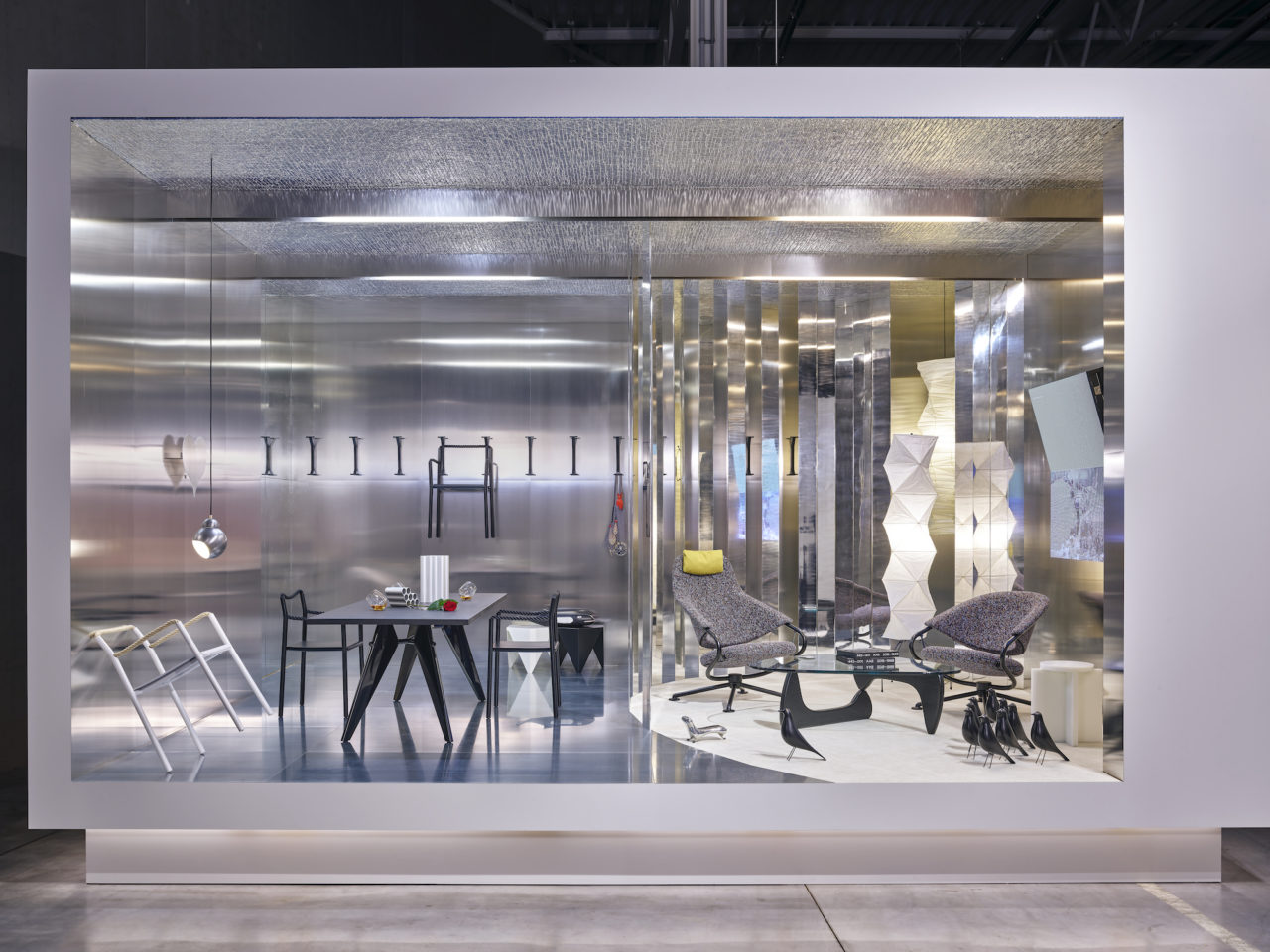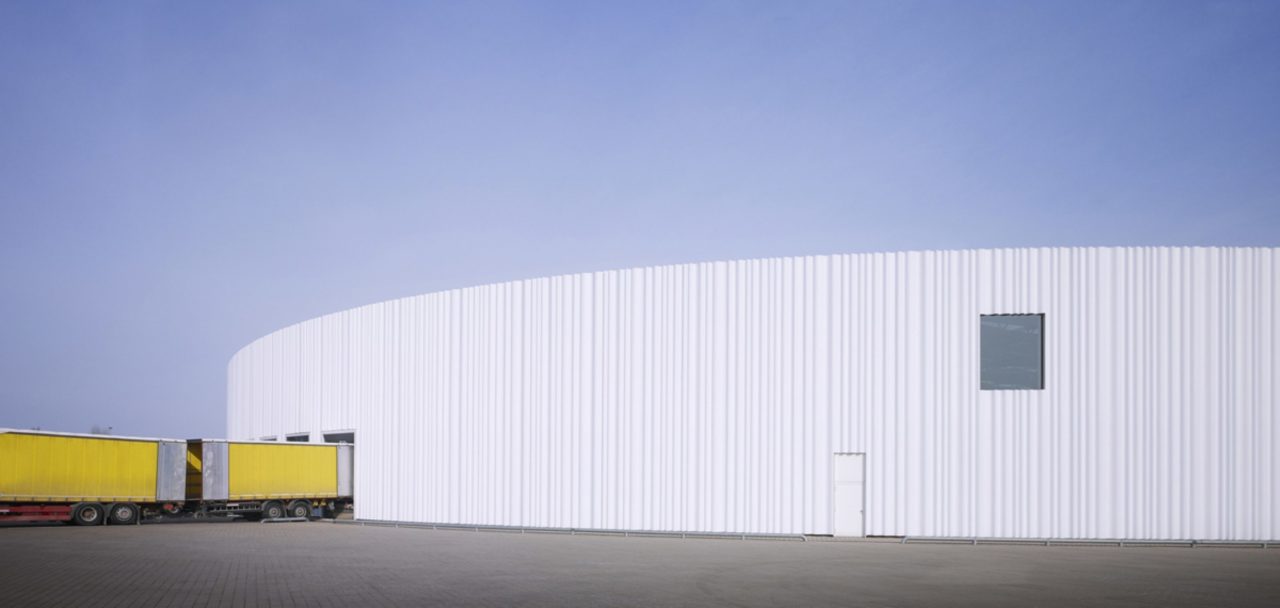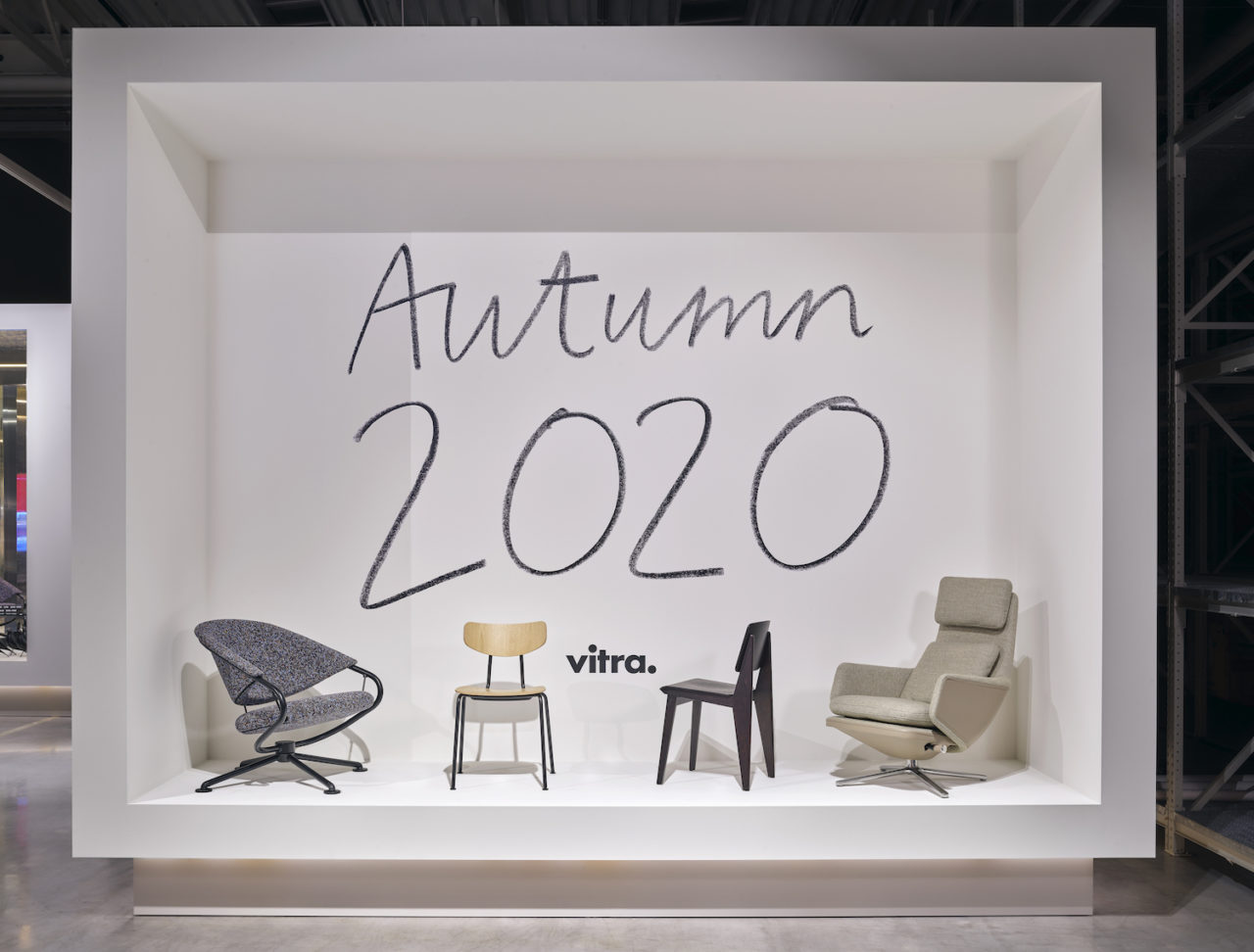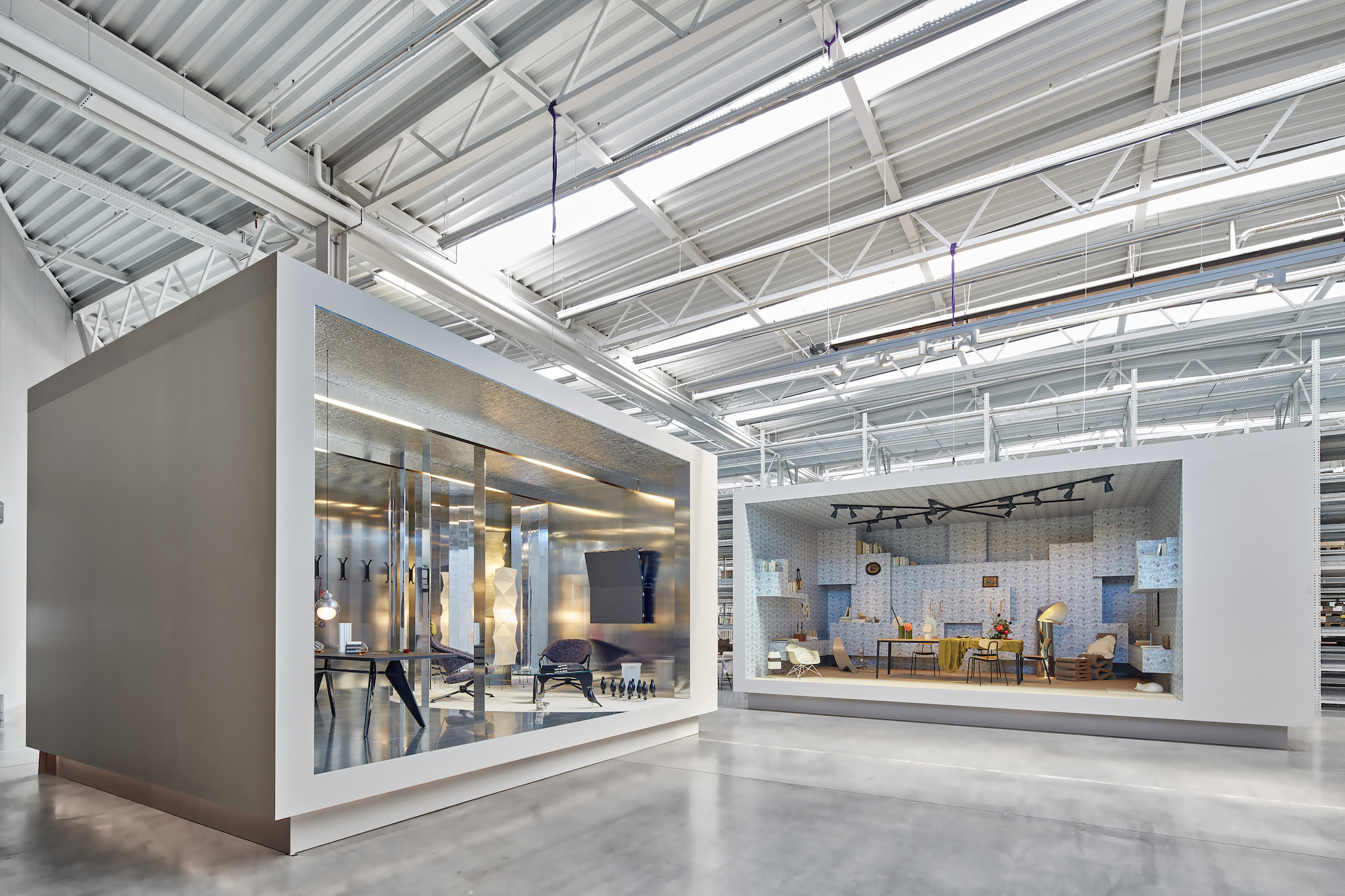Emulating curtain-like folds, the undulating facade at Vitra Campus, Weil am Rhein, Germany, is round, but not quite circular. Designed by SANAA in 2012, the logistics center is still producing and shipping furniture—albeit with a skeleton crew. While the staff kitchen remains closed and most operations have halted, Vitra safely presented its 2020 collections online in the wake of the coronavirus pandemic. In place of a pavilion at the now-canceled Salone del Mobile, Vitra’s CEO Nora Fehlbaum guided a virtual tour behind factory walls, presenting new and old products in two videos—one for the company’s Instagram and the other, longer cut version for private business partners.



While most of Italy was in lockdown, the family-run Swiss manufacturer had just put the finishing touches on the Milan booth design. With four vignettes, each was designated to designers from four practices: Charlap Hyman & Herrero, F Taylor Colantonio, Gonzalez Haase AAS, and Studio Daskal Laperre. The pavilion structures that would have otherwise been shipped to Milan—which, had been reused in two previous Milan fairs—were remotely designed knowing that they would not actually be seen in person (even the designers themselves were not able to see their creations with their own eyes).
With varying backgrounds, in both architecture and design, each practice envisioned a completely unique mise en scène. L.A. and New York-based design studio Charlap Hyman & Herrero conceptualized a fictitious dining scene inspired by bohemian descendants, Pauline de Rothschild and Maire-Laure de Noailles, with walls swathed in eighteen-century silk floral damask and Japanese tatami mats. Rome-based F Taylor Colantonio imagined a trompe l’oeil mashup of historical Italian design references, concocting a collaged backdrop of nineteenth-century floor tiles and Baroque-looking hand-painted drapery. Berlin-based architecture studio Gonzalez Haase AAS conjured futuristic Outerspace-like domestic sphere, complete with silvery mirror walls. Belgian design duo Studio Daskal Laperre dreamt up a minimal interior featuring a Mid-Century design famous for its innovative use of plywood, the LCW chair by Charles and Ray Eames.

In lieu of looking at the products up close, Vitra staff members utilized the onsite pavilions to give a virtual presentation via Zoom. Launching new pieces online, Vitra maintained connection to staff and clients. This practice, according to Vitra, is a part of a long-term digitization practice to address how the company will continue to interact with clients and intersect with internal staff.
Header: Framed within four monolithic rectangular boxes, each tableau showcases Vitra’s 2020 releases on the floor of the logistics center at the company campus in Weil am Rhein, Germany. (Eduardo Perez / Courtesy of Vitra)
